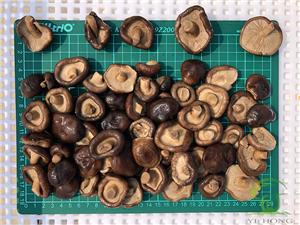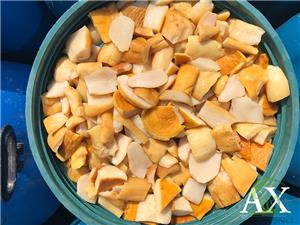How to Prolong the Shelf Life of Stropharia Through Salting?
Stropharia, a nutritious and unique edible mushroom, is loved by many diners for its unique flavor and nutritional value. However, how to effectively preserve this delicious ingredient so that it can be enjoyed even in the off-season is a concern for many consumers and merchants. This article will introduce the processing methods of brined stropharia stems in detail.

1. Collection:
It is crucial to select the right stropharia for salting. The best time to collect is when the mushroom body is 6 or 7 mature, that is, the cap is bell-shaped and the membrane has not yet broken. The mushroom body collected at this time not only tastes the best, but also better maintains its shape and flavor during subsequent processing. After collection, use bamboo sticks to gently scrape off the mud and sand on the mushroom feet, and wash it thoroughly with clean water.
2. Killing:
Killing is a key step in salting processing, which can effectively remove the enzyme activity in the mushroom body and prevent deterioration. Put the cleaned stropharia into 5% salt boiling water and boil for 8-12 minutes. The cooking time should be adjusted appropriately according to the size of the mushroom body to ensure that the mushroom body is cooked but not rotten. You can judge whether the mushroom body is cooked by the sinking and floating method: After stopping the fire, if the mushroom body sinks, it is cooked, and if it floats, it needs to continue cooking. After cooking, quickly put the mushroom body into cold water or running water to cool it down completely. Note that when killing the green, you should use an aluminum pot or a stainless steel pot, and avoid using an iron pot to prevent the mushroom body from browning and affecting the quality.
3. Pickling:
Pickling is the key to maintaining the flavor of the giant stropharia and extending the shelf life. First, prepare a 40% saturated salt water solution, dissolve 40kg of refined salt in 100kg of boiling water, and use it after cooling. Take out the boiled and cooled giant stropharia, put it in a clean large vat, and inject saturated salt water until the mushroom body is completely submerged. To prevent the mushroom body from discoloring and rotting when exposed to the salt water, you can press bamboo pieces and heavy objects in the vat. Then, sprinkle a layer of surface salt on the surface to protect the color and prevent corrosion. After the surface salt is dissolved, sprinkle another layer until the surface salt no longer dissolves.
4. Storage by rotating the tank:
In order to make the stropharia evenly flavored during the pickling process, the tank needs to be rotated once every 10 days. Refill the saturated brine, cover and sprinkle with flour salt until the brine concentration in the tank is stable at 24 degrees baume. At this time, the brined stropharia stems can be stored in barrels or prepared for export. The brine after processing can be recovered by heating and evaporation for recycling, which is both economical and environmentally friendly.
5. How to eat brined stropharia stems:
When eating, remove the brined stropharia stems, soak them in clean water to desalinate, and then cook. In order to further reduce the saltiness, soak the brined stropharia stems in 1% citric acid solution for 7 minutes to desalinate, and then rinse them with clean water after removing them. After being treated in this way, no salt is added when cooking the mushroom body to avoid increasing the saltiness and maintain the original flavor of the dish.
Through the above steps, not only can the shelf life of the stropharia be extended, but also this delicious ingredient can be enjoyed in the non-picking season.
In addition, Yihong not only produces this kind of brined stropharia stems, but also many different kinds of mushrooms such as salted shiitake mushrooms, salted porcini mushrooms, and salted nameko mushrooms.
- Company News
- Industry News
- Product News
- Video




